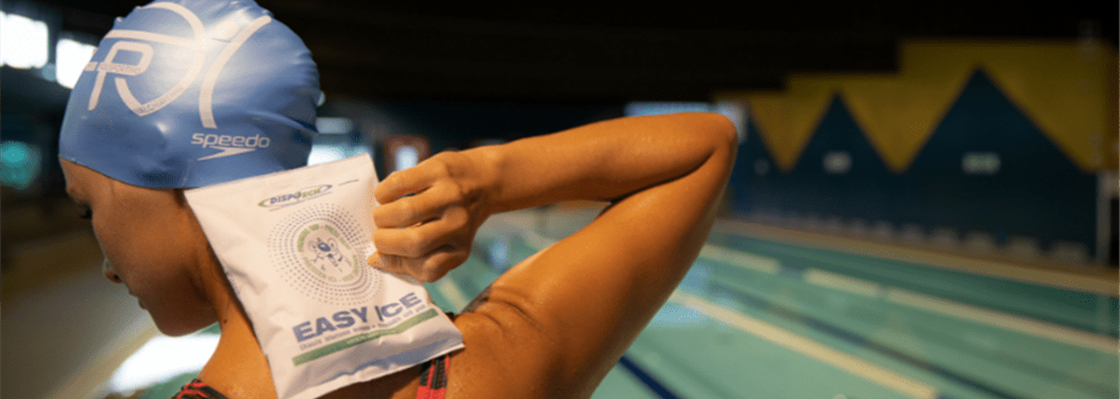Today, we will discuss instant ice ingredients and chemical ice packs, focusing on the composition of these small yet indispensable medical devices.
Whether kept at home or in the office, in the medicine cabinet or where sports are practised, ice packs are very common medical devices - and therefore also accessible to children. These products (whether reusable or not) usually contain chemicals which, if accidentally swallowed, can cause minor effects.
Nonetheless, it is important to know the ingredients with which they are made in order to be able to intervene promptly and prevent poisoning or health problems of any kind.
In this article, we will talk about:
How are ice packs made?
Designed to offer the benefits of cold, ice packs come in many forms and consistencies. In fact, the ice pack gel composition is made of soft, malleable gels in bags. They can be frozen, but also heated.
On the other hand, disposable instant ice packs ingredients are kept in a normal bag. However, when squeezed they turn cold in a few seconds. This type of ice pack is commonly found in first aid kits.
Depending on the type of ice pack, the results of exposure or ingestion of chemicals may vary from non-toxic to severe. Let’s have a closer look.
How to use instant ice packs and gel ice packs
When we talk about instant ice packs and gel ice packs, it is important to know their chemicals as well as their applications.
In fact, instant ice packs contain chemicals that are ideal for emergency and first-aid scenarios as they provide immediate pain relief in case of:
- injuries
- sprains
- Inflammation.
They are also useful in case of outdoor activities where it is not always possible to access a freezer, becoming a perfect cold therapy on-the-go.
On the other hand, due to their composition, reusable gel ice packs are suitable for repeated use. They are perfect for the treatment of:
- chronic injuries
- muscle pain
- post-surgery recovery.
Instant ice packs: ingredients and warnings
Let’s start with instant ice, also known as instant ice packs. Owing to a combination of chemical reactors, the bag can freeze in a few seconds. This is possible after pressing and the mixing of the ice pack chemicals contained in the bag that usually are:
- ammonium nitrate;
- calcium;
- ammonium nitrate or urea.
Among these three ingredients, the most toxic (if ingested) is ammonium nitrate, which can lead to:
- dilation of blood vessels;
- lowered blood pressure;
- symptoms such as headaches, dizziness, shortness of breath;
- the appearance of disorders such as methemoglobinemia and haemolysis.
However calcium is less toxic than ammonium nitrate, it can be as equally toxic if ingested in large quantities. The same principle applies to urea, the least toxic ice pack chemical among the three reactors. Nonetheless, it can cause nausea, vomiting, dizziness and drowsiness.
Contact us
Reusable ice packs: composition and warnings
Reusable ice packs are made of chemicals and gel usually contained in transparent plastic bags. Depending on the situation, they can be chilled, but also heated.
They are also known as gel packs and are usually composed of:
- water;
- a thickening agent;
- a freezing agent;
- silica gel;
- a non-toxic dye (usually blue).
Among these instant ice pack ingredients, the temperature-lowering agent - which usually consists of propylene glycol - is the one causing the greatest concerns if ingested.
Reusable ice cubes
Another type of instant ice packs are reusable ice cubes or bags made of gel beads. Ice cubes are filled with distilled water while small gel spheres are made of sodium polyacrylate that is toxic and can cause problems if swallowed.
These gel ice packs are particularly dangerous and it is important to pay attention, especially around children.
Best practices to deal with ice pack chemicals
Here you can find a list of best practices you should adopt in case you have ingested one of the ice pack chemicals cited above.
- If you have swallowed one of the ingredients inside an ice pack, you should contact your doctor or go to the nearest hospital immediately.
- If the ice pack ingredients entered in contact with your mouth or you ingested small doses of chemicals, they can be neutralised by rinsing and drinking water often.
- Should any of the substances composing the ice pack briefly enter in contact with your eyes, rinse them gently with room temperature water for about 15 minutes. If discomfort or pain persists, you must contact a doctor.
- If ice pack chemicals entered in contact with your skin, you can wash the affected area with soap and water.
You may also be interested in: Cool pack and ice pack: what’s the difference?
How to preserve ice pack chemicals effectively
In order to maintain their utility and safety, ice pack chemicals must be stored properly.
In case of instant ice packs, the perfect storage consists in:
- Placing them in a dry place
- Preventing degradation by keeping them away from direct sunlight and heat sources
- ensuring the packaging remains intact.
For reusable ice packs which often include gel material, proper conservation involves storing them in a freezer as this maintains the cold pack ingredients cold and preserves their cool temperature for medical purposes.
It is important to check these packs on a regular basis in order to make sure they are still intact, without signs of wear or leakage. In fact, the integrity of the ice pack material is directly related to its safety.
For any doubts or questions to this regard, you must always seek the care of a doctor who will be able to advise you on the best treatment.
What do you think about this article? Have your say by contacting Dispotech.


















